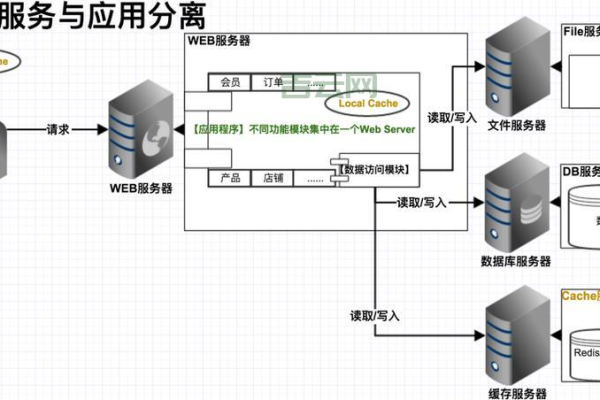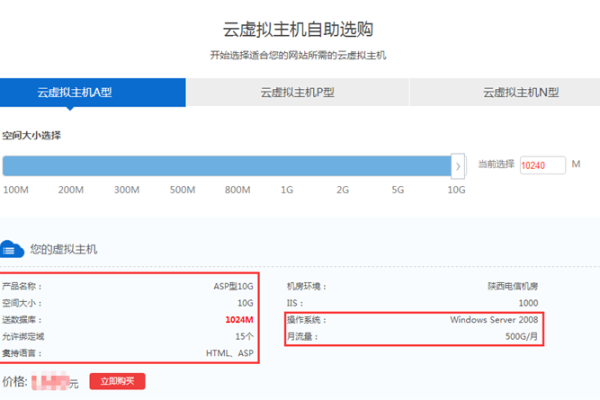选择服务器时,软件需要哪些关键因素?
- 行业动态
- 2024-10-08
- 6
一个软件使用的服务器类型取决于其需求、规模、预算和性能要求。常见的服务器类型包括物理服务器、虚拟服务器(如vmware或hyperv)、云服务器(如aws ec2、azure virtual machines或google compute engine)以及容器化服务器(如docker或kubernetes)。对于高可用性和可扩展性的需求,分布式服务器架构也是一个选择。
一个软件使用什么样的服务器取决于多个因素,包括软件的需求、性能要求、扩展性、成本和安全性等,以下是一些常见的服务器类型及其适用场景:
1.共享服务器
| 特点 | 适用场景 |
| 低成本 | 小型网站或个人项目 |
| 资源共享 | 低流量应用 |
| 管理简单 | 初学者或非技术用户 |
2.虚拟专用服务器 (VPS)
| 特点 | 适用场景 |
| 独立资源 | 中型企业网站 |
| 可定制 | 需要特定配置的应用 |
| 成本效益 | 预算有限但需求较高的项目 |
3.专用服务器
| 特点 | 适用场景 |
| 高性能 | 大型企业或高流量网站 |
| 完全控制 | 需要高度定制和安全的应用 |
| 高成本 | 对性能有极高要求的项目 |
4.云服务器
| 特点 | 适用场景 |
| 弹性扩展 | 快速增长的初创企业 |
| 按需付费 | 预算灵活变动的项目 |
| 高可用性 | 需要持续在线的应用 |
5.容器化服务器

| 特点 | 适用场景 |
| 轻量级 | 微服务架构 |
| 快速部署 | 开发和测试环境 |
| 隔离性 | 多租户应用 |
6.无服务器架构
| 特点 | 适用场景 |
| 自动扩展 | 事件驱动的应用 |
| 无需管理基础设施 | 开发者希望专注于代码 |
| 按使用付费 | 不确定流量的应用 |
7.混合服务器
| 特点 | 适用场景 |
| 结合本地和云资源 | 需要数据本地化的企业 |
| 灵活性 | 既有传统应用又有现代云应用的企业 |
| 成本优化 | 寻求最佳性价比的企业 |
8.高性能计算 (HPC) 服务器
| 特点 | 适用场景 |
| 强大计算能力 | 科学研究和工程模拟 |
| 并行处理 | 大数据分析 |
| 高速网络 | 分布式计算任务 |
9.游戏服务器
| 特点 | 适用场景 |
| 低延迟 | 在线多人游戏 |
| 高带宽 | 视频流和大型地图支持 |
| DDoS防护 | 防止网络攻击影响游戏体验 |
10.数据库服务器

| 特点 | 适用场景 |
| 优化查询性能 | OLTP (在线事务处理)系统 |
| 大数据存储 | OLAP (在线分析处理)系统 |
| 高可用性 | 关键业务应用 |
11.邮件服务器
| 特点 | 适用场景 |
| 可靠传输 | 企业电子邮件通信 |
| 反垃圾邮件 | 保护用户免受垃圾邮件侵扰 |
| 安全加密 | 确保邮件内容安全 |
12.Web服务器
| 特点 | 适用场景 |
| HTTP服务 | 静态网站托管 |
| 动态内容生成 | CMS (内容管理系统)网站 |
| SSL/TLS加密 | 确保数据传输安全 |
13.文件服务器
| 特点 | 适用场景 |
| 文件共享 | 企业内部文档管理 |
| 版本控制 | 软件开发团队协作 |
| 备份和恢复 | 数据保护和灾难恢复 |
14.视频流媒体服务器
| 特点 | 适用场景 |
| 实时传输协议 (RTP)支持 | 直播服务 |
| 自适应比特率流 | 根据用户带宽调整视频质量 |
| DRM保护 | 防止未授权访问和分发 |
15.物联网 (IoT) 服务器

| 特点 | 适用场景 |
| MQTT协议支持 | 设备间消息传递 |
| 边缘计算 | 在设备附近处理数据以减少延迟 |
| 安全通信 | 确保设备间数据传输的安全性 |
是一些常见的服务器类型及其适用场景,选择合适的服务器类型需要考虑软件的具体需求、预算限制以及未来的扩展计划。
| 软件类型 | 服务器类型 | 说明 |
| Web 应用 | Web 服务器 | 如 Apache, Nginx, IIS,用于处理 HTTP 请求和网页内容传输。 |
| 数据库应用 | 数据库服务器 | 如 MySQL, PostgreSQL, MongoDB,用于存储和管理数据。 |
| 文件共享 | 文件服务器 | 如 Samba, Windows File Sharing,用于存储和共享文件。 |
| 通信应用 | 代理服务器 | 如 Squid, ProxySG,用于转发网络请求,提供缓存和过滤功能。 |
| 电子商务 | 应用服务器 | 如 Tomcat, JBoss,用于运行 Java 应用程序,如购物车、订单处理等。 |
| 实时消息系统 | 消息队列服务器 | 如 RabbitMQ, Apache Kafka,用于处理和转发消息。 |
| 云服务 | 云服务器 | 如 AWS EC2, Google Compute Engine,提供可扩展的计算资源。 |
| 游戏服务器 | 游戏服务器 | 如 Unreal Engine Server, Unity Server,用于处理游戏逻辑和玩家交互。 |
| 流媒体应用 | 流媒体服务器 | 如 Wowza Streaming Engine, Adobe Media Server,用于传输视频和音频流。 |
| 大数据分析 | 数据处理服务器 | 如 Apache Hadoop, Apache Spark,用于处理大规模数据集。 |
| 人工智能 | 机器学习服务器 | 如 TensorFlow Server, PyTorch Server,用于训练和部署机器学习模型。 |
| 虚拟化 | 虚拟化服务器 | 如 VMware ESXi, Microsoft HyperV,用于创建和管理虚拟机。 |
| 通信网关 | 网关服务器 | 如 Open网络传输层, pfSense,用于连接不同网络或提供安全隧道。 |
| 代码托管 | 版本控制系统服务器 | 如 GitLab, GitHub,用于存储和管理代码版本。 |
| 容器化 | 容器化平台 | 如 Docker, Kubernetes,用于打包、部署和管理容器化应用。 |
| 作业调度 | 作业调度服务器 | 如 Apache Oozie, Apache Airflow,用于自动化任务调度和执行。 |
| 互联网接入 | 互联网接入服务器 | 如路由器、防火墙,用于连接互联网并提供安全保护。 |
同一软件可能需要使用多种类型的服务器,以满足不同的功能需求,服务器类型也可能随着技术的发展而变化。















